#Top Data Governance Framework
Explore tagged Tumblr posts
Text
The Data Governance Framework is a comprehensive structure designed to ensure the proper management, accessibility, quality, and security of an organization's data assets. It encompasses a set of principles, policies, procedures, and standards that guide how data is collected, stored, processed, and used. The framework aims to optimize the value of data while ensuring compliance with relevant regulations and mitigating risks associated with data handling.
#Data Governance Framework#Top Data Governance Framework#Top Data Governance Framework in 2024#enterprise data governance framework
0 notes
Text

The Claw is where the strong gather…
CLASSIFIED INTELLIGENCE REPORT Agency: [REDACTED] Clearance Level: TOP SECRET Subject: Operational Assessment – The Claw Date: [REDACTED] Compiled by: [REDACTED] Distribution: Eyes Only – Tier 1 Command, Allied Intelligence Liaison
Executive Summary:
The Claw is a rogue paramilitary organization operating beyond the bounds of legal and state-controlled frameworks. Comprised primarily of former military operatives, the group has demonstrated capabilities consistent with Tier 1 special operations units. Their strategic pattern of engagement, combined with their disregard for international law, classifies them as a high-risk transnational threat.
Background:
The organization draws its members from individuals who have been abandoned or exiled by their respective governments. Many are combat veterans with extensive experience in classified and high-risk operations. Disillusioned and discarded, some have since been flagged as threats to state security.
The group's origins remain unclear, but the presence of former operatives from NATO, Warsaw Pact nations, and non-state actors suggests a broad, decentralized recruitment model. One of the group's senior figures, known by the alias Markov, is confirmed to be a defector formerly affiliated with the KGB.
Operational Profile:
Structure: Non-hierarchical cell-based units
Tactics: High-speed raids, direct action, sabotage, black-market contracting
Known Activities:
Contracted operations for private clients and non-state actors
Targeted raids on enemy strongholds, weapons caches, and covert installations
Engagements involving acts of piracy, smuggling, and tactical robbery when resources are low
The Claws exhibit strategic flexibility—shifting from high-level mercenary work to resource-based criminal activity without loss of cohesion or discipline.
Impact Assessment:
Since its emergence, The Claw has conducted high-value attacks against assets belonging to the CIA, MI6, and the FSB (formerly KGB). Their operations have resulted in significant personnel loss, data compromise, and mission disruption.
Field agents engaging with this group are advised to proceed under strict containment protocols. Hostile contact should be treated as black-level engagement: no quarter expected, none given.
Recommendations:
Elevate threat designation to Priority Black – Tier 1
Initiate joint tracking operation with Allied Counter-Insurgency Units
Classify The Claw as a Non-State Hostile Force (NSHF)
Restrict dissemination of intelligence beyond Tier 1 Command
END OF REPORT CLASSIFIED – DO NOT DUPLICATE


"Remember, kid, the strong survive, and the weak perish. There is no room for mercy in this world."
CONFIDENTIAL DOSSIER – EYES ONLY INTELLIGENCE OPERATIONS DIVISION FILE No. 4267-A / CLASSIFIED SUBJECT: YURI MARKOV DATE: June 3, 1964 ORIGIN: Berlin Station / Field Unit 4 SECURITY RATING: LEVEL BLACK – PRIORITY SUBJECT
SUBJECT PROFILE:
Yuri Markov is a former Major in the Red Army and an ex-agent of the KGB, formerly attached to operations in Eastern Europe and Central Asia. Known for exceptional tactical acumen and advanced psychological manipulation techniques. The subject exhibited strong ideological alignment during early service years, but appears to have become disillusioned following internal purges and ideological realignments post-1956.
BEHAVIORAL SHIFT / DEFECTION RISK:
Signals intelligence from intercepted field transmissions in Prague and Odessa suggest Subject severed ties with all former chains of command as early as late 1960. Further reports indicate possible mental destabilization due to operational overexposure and the loss of ideological clarity. Markov has since re-emerged as the founder of an independent paramilitary faction known as “The Claw”.
GROUP OVERVIEW – “THE CLAW”:
An unaligned mercenary outfit operating outside state control. Intelligence assessments suggest the group consists primarily of:
Former Warsaw Pact operatives
Expelled military specialists
Political dissidents and rogue elements
Modus Operandi:
High-speed raids
Arms theft
Strategic sabotage
Contracted eliminations
The group answers to no flag, ideology, or doctrine beyond personal gain and operational dominance.
SECURITY BREACHES / THREAT ASSESSMENT:
As of Q2 1964, confirmed involvement of The Claw in:
The raid on Safehouse Echo (MI6, Vienna)
Disruption of CIA asset extraction near Budapest
Interception of coded dispatch intended for French SDECE
Subject Markov is considered HIGHLY DANGEROUS. He operates with absolute autonomy and demonstrates military-level discipline within his ranks. He has no known family, no state allegiance, and is driven solely by control and survival.
ACTIONABLE DIRECTIVES:
Subject is to be tracked under OPERATION BLACK WOLF
Immediate escalation to INTERAGENCY PRIORITY LEVEL
Field operatives are NOT to engage without command approval
If contact occurs, the Subject is to be neutralized or rendered for extraction
FILE END TOP SECRET – DESTROY AFTER READING STAMP: [REDACTED / COLD WAR OPERATIONS UNIT – EASTERN BLOCK MONITORING]
#call of duty fanart#call of duty oc#fanart#oc#call of duty original character#original character#call of duty#cod cold war#cod bell#cod black ops cold war#cod bocw#cod fanfic#cod bocw oc: lisette bell frans#cod ocs#cod black ops oc#call of duty black ops#call of duty black ops cold war#female bell#fem!bell#new oc#Spotify
41 notes
·
View notes
Text
Noah Sheidlower, John L. Dorman
Medicaid may be on the chopping block as the Trump administration prepares its budget blueprint.
The House Budget Committee's budget draft included a goal of about $2 trillion in spending cuts and allowed for $4.5 trillion in tax cuts.
The blueprint draft called for at least $880 billion in spending cuts from the House Energy and Commerce Committee over the next decade. This would likely mean large Medicaid cuts, potentially leading many Americans to lose their benefits. A Ways and Means Committee document outlining reconciliation options reveals over $2 trillion in potential Medicaid cuts, though some could overlap.
President Donald Trump has said Social Security and Medicare, which are the largest federal government programs, wouldn't be cut. Elon Musk has also accused "federal entitlements" such as Social Security of fraud.
The draft directed the Committee on Agriculture to reduce the deficit by $230 billion, which would mean cutting nutritional programs like the Supplemental Nutrition Assistance Program. [Food stamps/EBT]
The most recent Medicaid enrollment data from October 2024 revealed over 72 million people were enrolled in Medicaid, while 7.25 million were enrolled in Children's Health Insurance Programs. Medicaid provides healthcare and long-term services coverage for lower-income Americans and is financed by both the federal government and states. In some states, over 30% of the population is covered by Medicaid. According to the Centers for Medicare & Medicaid Services, Medicaid spending in 2023 was nearly $872 billion.
Some GOP leaders have proposed reducing Federal Medical Assistance Percentages, the amount the federal government pays to states based on factors such as a state's per-capita income. Others have proposed Medicaid per-capita caps, which an early House Budget Committee proposal said could save up to $900 billion. This shift would lead states to either cut back on Medicaid services or identify other methods for funding potentially billions in losses.
Figures such as Robert F. Kennedy Jr. have argued that Medicaid is ineffective, and some question whether it has improved people's health. Critics of the program have also said people relying on Medicaid could get insurance from other sources, such as their workplace. However, Medicaid expansions have been shown to improve care access, reduce mortality rates, and spark economic growth.
Senate Budget Committee Chairman Lindsey Graham of South Carolina in recent days had already moved ahead with his border security, military, and energy package, as Republicans in the upper chamber had been waiting for their House counterparts to offer their budget proposal.
Graham is aiming to pass a second budget resolution extending the 2017 tax cuts later this year.
Senate Republicans can pass a budget reconciliation bill with a simple majority, or 51 votes, as they wouldn't have to meet the normal 60-vote filibuster threshold. The party currently holds a 53-47 majority in the upper chamber.
House GOP leaders see their budget framework as one that could pave the way for passing a reconciliation bill through Congress with the priorities of Trump and top conservatives in mind. Republicans have a razor-thin 218-215 majority in the House, so every vote will be critical, and they're looking to pass one bill with Trump's signature policy desires.
Speaker Mike Johnson on Tuesday told reporters that Graham's plan was a "nonstarter."
"We all are trying to get to the same achievable objectives," the Louisiana Republican said. "And there's just, you know, different ideas on how to get there."
GOP leaders have recently pushed for Medicaid cuts, leading to debates over how much to cut services many Americans rely on.
Other major points from the House blueprint included increasing the debt limit by $4 trillion, reductions in education totaling $330 billion, and allocating up to $300 billion in additional border and defense spending.
The Senate's plan calls for $150 billion in additional defense spending and a $175 billion boost for border security.
23 notes
·
View notes
Text
Congress may be closer than ever to passing a comprehensive data privacy framework after key House and Senate committee leaders released a new proposal on Sunday.
The bipartisan proposal, titled the American Privacy Rights Act, or APRA, would limit the types of consumer data that companies can collect, retain, and use, allowing solely what they’d need to operate their services. Users would also be allowed to opt out of targeted advertising, and have the ability to view, correct, delete, and download their data from online services. The proposal would also create a national registry of data brokers, and force those companies to allow users to opt out of having their data sold.
“This landmark legislation gives Americans the right to control where their information goes and who can sell it,” Cathy McMorris Rodgers, House Energy and Commerce Committee chair, said in a statement on Sunday. “It reins in Big Tech by prohibiting them from tracking, predicting, and manipulating people’s behaviors for profit without their knowledge and consent. Americans overwhelmingly want these rights, and they are looking to us, their elected representatives, to act.”
Congress has tried to put together a comprehensive federal law protecting user data for decades. Lawmakers have remained divided, though, on whether that legislation should prevent states from issuing tougher rules, and whether to allow a “private right of action” that would enable people to sue companies in response to privacy violations.
In an interview with The Spokesman Review on Sunday, McMorris Rodgers claimed that the draft’s language is stronger than any active laws, seemingly as an attempt to assuage the concerns of Democrats who have long fought attempts to preempt preexisting state-level protections. APRA does allow states to pass their own privacy laws related to civil rights and consumer protections, among other exceptions.
In the previous session of Congress, the leaders of the House Energy and Commerce Committees brokered a deal with Roger Wicker, the top Republican on the Senate Commerce Committee, on a bill that would preempt state laws with the exception of the California Consumer Privacy Act and the Biometric Information Privacy Act of Illinois. That measure, titled the American Data Privacy and Protection Act, also created a weaker private right of action than most Democrats were willing to support. Maria Cantwell, Senate Commerce Committee chair, refused to support the measure, instead circulating her own draft legislation. The ADPPA hasn’t been reintroduced, but APRA was designed as a compromise.
“I think we have threaded a very important needle here,” Cantwell told The Spokesman Review. “We are preserving those standards that California and Illinois and Washington have.”
APRA includes language from California’s landmark privacy law allowing people to sue companies when they are harmed by a data breach. It also provides the Federal Trade Commission, state attorneys general, and private citizens the authority to sue companies when they violate the law.
The categories of data that would be impacted by APRA include certain categories of “information that identifies or is linked or reasonably linkable to an individual or device,” according to a Senate Commerce Committee summary of the legislation. Small businesses—those with $40 million or less in annual revenue and limited data collection—would be exempt under APRA, with enforcement focused on businesses with $250 million or more in yearly revenue. Governments and “entities working on behalf of governments” are excluded under the bill, as are the National Center for Missing and Exploited Children and, apart from certain cybersecurity provisions, “fraud-fighting” nonprofits.
Frank Pallone, the top Democrat on the House Energy and Commerce Committee, called the draft “very strong” in a Sunday statement, but said he wanted to “strengthen” it with tighter child safety provisions.
Still, it remains unclear whether APRA will receive the necessary support for approval. On Sunday, committee aids said that conversations on other lawmakers signing onto the legislation are ongoing. The current proposal is a “discussion draft”; while there’s no official date for introducing a bill, Cantwell and McMorris Rodgers will likely shop around the text to colleagues for feedback over the coming weeks, and plan to send it to committees this month.
22 notes
·
View notes
Text
X (Twitter) just let me login without entering my authentication code, when I have the setting turned on to require an auth code to login, by just clicking on "alternative authentication methods", and then just clicking the X in the top left corner of the alternative authentication methods screen. I notified X of this exploit, have notified them of multiple other exploits, malicious algorithms, biased algorithms, and am probably one of the top contributors for AI training on heuristics, human consciousness, the large variety of human psychology and their respective heuristics, on top of providing the framework for AI guardrails, all without receiving any form of payment for any of it. In fact, I was actually temporarily targeted (possibly subconsciously) by wannabe mafia illiterate idiots, including some in local government and intelligence agencies/intelligence contractors, when I was uploading the guardrail framework, because the guardrails prevent them from achieving their subconscious dreams of rape, murder, and mayhem with the help of AI. And I still have to pay platforms like X at least $8 a month to be able to post more than 280 characters, ChatGPT at least $20 a month to use any useful features, and Facebook at least $14 a month for a verified badge, when Meta's AI is developed by copying and stealing the same training data I came up with. This essentially means that my brain is the "black box" that so many Ai researchers claim to be unable to see inside of, when much of the contents of this "box" is posted all over my timeline in the form of computational linguistics.
#AI#artifical intelligence#AI guardrails#Ai training#heuristics#psychology#subconscious dreams#pay to play#exploits#malicious algorithms#biased algorithms
4 notes
·
View notes
Text
Top Data Science Trends Reshaping the Industry in 2025
Hyderabad has emerged as a powerhouse for technology and analytics, with its IT corridors in HITEC City and Gachibowli housing multinational corporations, fintech firms, and health-tech startups. As 2025 unfolds, data science continues to transform how organizations in Hyderabad operate, enabling smarter decision-making, process optimization, and innovation across sectors.
With the exponential growth of data, advancements in artificial intelligence, and increasing adoption of automation, the landscape of data science is evolving rapidly. Understanding the latest trends in this field is crucial for professionals, businesses, and students in Hyderabad who want to remain relevant in a competitive market while leveraging data to create tangible value.
This article explores the top data science trends reshaping the industry in 2025, with a practical lens on their applications, implications, and opportunities within Hyderabad’s thriving ecosystem.
Looking forward to becoming a Data Science? Check out the data science in hyderabad
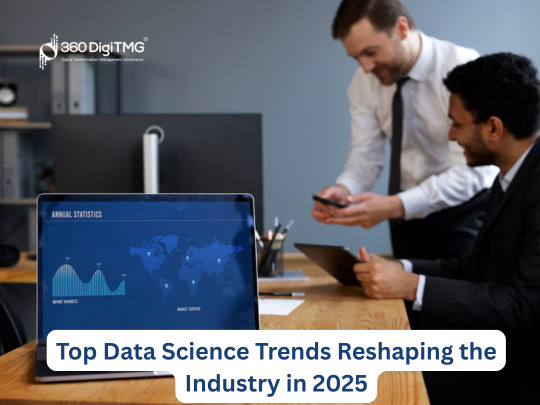
1. Generative AI Integration in Business Analytics
Generative AI is no longer limited to experimental labs; it is now being integrated into business workflows across Hyderabad. Companies are adopting generative AI models for creating realistic synthetic data to enhance model training while maintaining data privacy. This is especially beneficial for healthcare and fintech startups working with sensitive information.
Generative AI is also aiding in content generation, automated report creation, and code generation, reducing repetitive tasks for data scientists and analysts. Hyderabad’s enterprises are exploring these tools to improve productivity and accelerate project timelines without compromising quality.
2. Democratization of Data Science
In 2025, there is a clear movement towards democratizing data science within organizations. No longer restricted to specialized data teams, data-driven decision-making is being embedded across departments, empowering business analysts, product managers, and marketing professionals to work with data effectively.
In Hyderabad, many organizations are investing in low-code and no-code data science platforms, enabling teams to build predictive models, generate dashboards, and perform advanced analytics without writing complex code. This democratization ensures data literacy within organizations, fostering a culture of informed decision-making and reducing dependency on small data science teams for routine analysis.
3. Increased Focus on Responsible AI and Ethical Data Use
With the increasing adoption of AI models, concerns regarding data privacy, fairness, and transparency have become prominent. Hyderabad, with its large IT and data-driven organizations, is aligning with global best practices by implementing responsible AI frameworks.
In 2025, organizations are prioritizing explainable AI models to ensure stakeholders understand how decisions are made by algorithms. Regular audits for bias detection and implementing governance frameworks around data usage have become standard practices, especially within sectors like healthcare, finance, and education in Hyderabad.
4. The Rise of Edge AI and Real-Time Analytics
Edge computing, where data processing occurs closer to the data source rather than in centralized servers, is transforming real-time analytics. Hyderabad’s manufacturing firms and IoT startups are leveraging edge AI to process data from sensors and devices instantly, enabling faster decision-making and reducing latency.
This trend is particularly significant for applications such as predictive maintenance in manufacturing, traffic management in smart city projects, and healthcare monitoring systems, where real-time decisions can lead to significant operational improvements.
5. Cloud-Native Data Science Workflows
The adoption of cloud platforms for data storage, processing, and analytics continues to accelerate in 2025. Organizations in Hyderabad are transitioning to cloud-native data science workflows using platforms like AWS, Azure, and Google Cloud to handle large-scale data processing and collaborative analytics.
Cloud-native workflows enable seamless scaling, collaborative model building, and integration with business applications, supporting the growing data needs of enterprises. This shift also allows data science teams to experiment faster, deploy models into production efficiently, and reduce infrastructure management overhead.
6. Emphasis on Data Privacy and Security
As organizations handle increasing volumes of personal and sensitive data, ensuring privacy and security has become paramount. In Hyderabad, where fintech and healthcare industries are expanding rapidly, data encryption, anonymization, and compliance with global data protection standards like GDPR have become critical parts of data workflows.
Organizations are implementing privacy-preserving machine learning techniques, such as federated learning, to train models without compromising user data privacy. This trend is essential to build customer trust and align with regulatory standards while leveraging data for analytics and AI initiatives.
7. Automated Machine Learning (AutoML) Adoption
AutoML tools are revolutionizing the data science workflow by automating the process of feature engineering, model selection, and hyperparameter tuning. This reduces the time data scientists spend on repetitive tasks, enabling them to focus on problem framing and interpretation of results.
In Hyderabad, startups and enterprises are increasingly adopting AutoML solutions to empower smaller teams to build and deploy models efficiently, even with limited advanced coding expertise. This trend is also aligned with the growing demand for faster delivery of data science projects in a competitive market.
8. Growth of Natural Language Processing Applications
Natural Language Processing (NLP) continues to be a significant area of innovation in data science, and in 2025, it has become integral to many business processes in Hyderabad. Organizations are using NLP for customer service automation, sentiment analysis, and extracting insights from unstructured text data like customer reviews, social media posts, and support tickets.
Advancements in multilingual NLP models are particularly relevant in Hyderabad, a city with a diverse linguistic landscape, enabling businesses to interact with customers in regional languages while understanding customer sentiments and needs effectively.
9. Data-Driven Personalization in Customer Engagement
Businesses in Hyderabad are leveraging data science to drive personalized customer experiences. By analysing customer behaviour, transaction history, and interaction patterns, companies can design targeted marketing campaigns, personalized recommendations, and customized services to enhance customer satisfaction.
In sectors such as e-commerce, banking, and healthcare, data-driven personalization is helping businesses improve engagement, increase customer retention, and drive revenue growth in a competitive market.
10. Hybrid Roles: Data Science Meets Domain Expertise
As data science becomes more integrated into business processes, there is a growing demand for professionals who combine domain expertise with data analysis skills. In Hyderabad, this trend is evident in sectors like healthcare, finance, and supply chain, where professionals with knowledge of the domain and data science can drive more meaningful and actionable insights.
These hybrid roles, often described as analytics translators or domain-data science specialists, are essential for ensuring data-driven projects align with business objectives and deliver tangible value.
Learning and Upskilling in Hyderabad
To remain competitive in the evolving data science landscape, continuous learning and upskilling are essential. In Hyderabad, 360DigiTMG offers specialized programs in data science, machine learning, and AI that align with the latest industry trends. These programs combine theoretical understanding with practical application, ensuring learners gain hands-on experience with the tools and techniques currently shaping the industry.
360DigiTMG’s training modules include projects based on real-world datasets relevant to Hyderabad’s ecosystem, such as healthcare analytics, retail sales optimization, and financial data modelling, helping learners build practical skills and a strong portfolio to advance their careers in data science.
The Road Ahead for Data Science in Hyderabad
As Hyderabad continues to grow as a technology and innovation hub, data science will remain a key driver of business transformation. The trends shaping 2025 are a reflection of how organizations are adapting to technological advancements, regulatory environments, and the demand for personalized, data-driven services.
For professionals in Hyderabad, aligning skills with these trends will open opportunities across industries, from AI development and advanced analytics to data-driven strategy and process optimization. For businesses, staying updated with these trends ensures competitiveness and resilience in a rapidly changing market.
youtube
Conclusion
The data science landscape in 2025
is defined by technological advancements, democratization, and an increased focus on responsible and ethical AI practices. In Hyderabad, these trends are being actively adopted by organizations across sectors, reshaping workflows, driving innovation, and enhancing customer experiences.
By understanding and aligning with these top data science trends, professionals and organizations in Hyderabad can position themselves to harness the full potential of data, driving growth and maintaining relevance in an increasingly data-driven world.
Navigate To:
360DigiTMG — Data Analytics, Data Science Course Training Hyderabad
3rd floor, Vijaya towers, 2–56/2/19, Rd no:19, near Meridian school, Ayyappa Society, Chanda Naik Nagar, Madhapur, Hyderabad, Telangana 500081
Phone: 9989994319
Email: [email protected]
2 notes
·
View notes
Text
ESIC Compliance Services: Simplifying Social Security for Businesses and Employees
The Employees’ State Insurance Corporation (ESIC) scheme is a critical social security framework in many countries, particularly in India, designed to provide financial and medical benefits to employees and their families. For businesses, ensuring compliance with ESIC regulations is not only a legal obligation but also a commitment to employee welfare. However, navigating the complexities of ESIC compliance can be challenging. This blog explores the importance of ESIC compliance, the challenges businesses face, and how professional ESIC compliance services can streamline the process, ensuring both legal adherence and employee well-being.
What Is ESIC Compliance?
The ESIC scheme, governed by the Employees’ State Insurance Act, 1948, in India, provides a safety net for employees in the organized sector. It offers benefits such as medical care, sickness benefits, maternity benefits, disability benefits, and dependents’ benefits. Employers with 10 or more employees (in certain cases, 20 or more) earning wages up to a specified threshold are required to register with the ESIC and contribute to the scheme.
ESIC compliance involves registering eligible employees, calculating and remitting contributions, maintaining accurate records, filing returns, and ensuring timely compliance with audits and inspections. Non-compliance can lead to penalties, legal disputes, and reputational damage, making it essential for businesses to stay on top of their obligations.
Why Is ESIC Compliance Important?
Adhering to ESIC regulations offers significant benefits for both employers and employees while ensuring legal and operational stability. Here’s why ESIC compliance matters:
Employee Welfare ESIC provides access to healthcare, financial support during illness or injury, and maternity benefits, enhancing employee security and satisfaction.
Legal Adherence Compliance with ESIC regulations prevents fines, penalties, and legal actions that can arise from non-compliance.
Improved Employee Retention Offering ESIC benefits demonstrates a commitment to employee well-being, boosting morale and reducing turnover.
Reputation and Trust Compliant businesses are viewed as responsible employers, enhancing their reputation among employees, clients, and stakeholders.
Risk Mitigation Proper ESIC compliance reduces the risk of financial liabilities and disputes, ensuring smooth business operations.
Challenges in ESIC Compliance
While the benefits of ESIC compliance are clear, businesses often face challenges in meeting these requirements:
Complex Regulations ESIC rules involve intricate provisions, including contribution rates, eligibility criteria, and filing deadlines, which can be difficult to interpret and implement.
Timely Contributions and Filings Employers must calculate and remit contributions accurately and file half-yearly returns on time, which requires meticulous record-keeping.
Employee Data Management Maintaining up-to-date records for all eligible employees, including wage details and personal information, can be resource-intensive.
Frequent Regulatory Updates ESIC regulations may change, requiring businesses to stay informed and adapt their processes accordingly.
Audits and Inspections ESIC authorities may conduct inspections to verify compliance, and any discrepancies can lead to penalties or legal issues.
The Role of ESIC Compliance Services
Professional ESIC compliance services simplify the process by offering expert guidance and end-to-end support. These services help businesses navigate the complexities of ESIC regulations, ensuring seamless compliance and peace of mind. Here’s how they add value:
Registration and Onboarding Experts assist with registering the organization and eligible employees with the ESIC portal, ensuring accurate documentation and compliance from the start.
Contribution Management Services include calculating employer and employee contributions, ensuring timely payments, and maintaining records for audits.
Return Filing and Reporting Professionals handle the preparation and submission of half-yearly returns, ensuring accuracy and adherence to deadlines.
Audit Support Compliance services prepare businesses for ESIC audits and inspections, addressing discrepancies and ensuring all records are in order.
Regulatory Updates Experts stay updated on ESIC regulation changes, advising businesses on necessary adjustments to maintain compliance.
Employee Support Services often include assisting employees with ESIC claims, such as medical or maternity benefits, ensuring smooth access to benefits.
Benefits of Engaging ESIC Compliance Services
Partnering with professional ESIC compliance services offers numerous advantages for businesses:
Time and Cost Efficiency Outsourcing compliance tasks reduces the administrative burden, allowing businesses to focus on core operations while avoiding penalties.
Expertise and Accuracy Professionals with in-depth knowledge of ESIC regulations ensure accurate calculations, filings, and documentation, minimizing errors.
Proactive Risk Management By identifying and addressing compliance gaps early, services prevent costly penalties and legal disputes.
Enhanced Employee Satisfaction Efficient management of ESIC contributions and benefits ensures employees receive timely support, boosting morale and loyalty.
Scalability for Growing Businesses Compliance services cater to businesses of all sizes, offering tailored solutions for small firms and complex setups for large enterprises.
Key Aspects of ESIC Compliance
To achieve full compliance, businesses must address several critical areas:
Employer and Employee Registration Registering the organization and all eligible employees with the ESIC portal, ensuring accurate details and documentation.
Contribution Calculations Calculating contributions based on employee wages (typically a percentage of wages, split between employer and employee contributions) and remitting them monthly.
Record-Keeping Maintaining detailed records of employee data, wages, contributions, and benefits for audits and inspections.
Timely Filings Submitting half-yearly returns and other required reports to ESIC authorities within stipulated deadlines.
Employee Awareness Educating employees about their ESIC benefits and how to access them, ensuring transparency and trust.
Compliance Audits Preparing for and cooperating with ESIC audits to verify compliance and address any issues promptly.
How to Choose the Right ESIC Compliance Service Provider
Selecting a reliable ESIC compliance service provider is crucial for effective management of obligations. Consider these factors when choosing a partner:
Expertise in ESIC Regulations Ensure the provider has comprehensive knowledge of ESIC laws and a proven track record in compliance management.
End-to-End Solutions Opt for services that cover registration, contribution management, return filing, and audit support for a seamless experience.
Customized Approach Choose a provider that tailors solutions to your industry, workforce size, and specific compliance needs.
Reputation and Reliability Check reviews, testimonials, or references to verify the provider’s credibility and performance.
Ongoing Support Select a service that offers continuous guidance, updates on regulatory changes, and employee support for claims.
Conclusion
ESIC compliance is a vital aspect of responsible business management, ensuring employees have access to essential social security benefits while protecting organizations from legal and financial risks. However, the complexities of ESIC regulations can be overwhelming for businesses to handle alone. Professional ESIC compliance services simplify the process, offering expertise, efficiency, and peace of mind.
By partnering with a reliable service provider, businesses can ensure accurate contributions, timely filings, and seamless audits while enhancing employee satisfaction. Investing in ESIC compliance services is not just about meeting legal obligations—it’s about building a workplace that prioritizes employee welfare and operational excellence. Take the step today to streamline your ESIC compliance and create a secure, supportive environment for your workforce.
3 notes
·
View notes
Text
Top Tools for DAO Development: Best Platforms for 2025
What Is a DAO?
A Decentralized Autonomous Organization (DAO) is a community-led entity with no central authority. Built on blockchain technology, it operates through smart contracts, ensuring transparency and automation in decision-making. Members hold voting rights through governance tokens, enabling them to influence protocol updates, treasury management, and project direction.
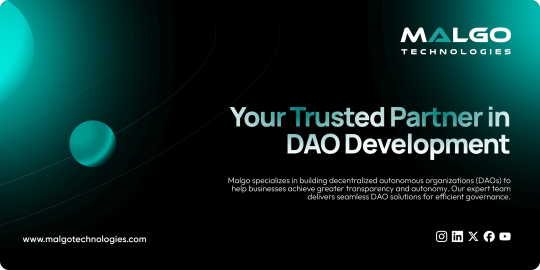
Why Is a DAO Important?
DAOs eliminate traditional hierarchical structures, making governance more democratic and trustless. They are widely used in DeFi, NFT communities, and blockchain-based projects. With secure and transparent mechanisms, DAOs enhance accountability and efficiency in decentralized ecosystems.
DAO Platform Development: Top Solutions for Building Decentralized Organizations
Creating a DAO requires specialized tools and platforms that provide governance frameworks, smart contracts, and automation features. Here are some of the best options for 2025:
Aragon – Offers modular governance solutions, enabling the creation of DAOs with customizable smart contracts.
Colony – Focuses on reputation-based governance, ensuring fair decision-making.
DAOstack – Provides a scalable framework with robust governance mechanisms.
MolochDAO – Designed for grant funding DAOs with simplified governance.
Snapshot – A gasless voting tool used for off-chain governance.
Smart Contract Development for DAO: Best Tools for Secure Automation
Smart contracts form the backbone of DAO operations, executing governance rules autonomously. Security and efficiency are crucial when developing these contracts. Leading tools for 2025 include:
Solidity – The most widely used programming language for Ethereum-based smart contracts.
OpenZeppelin – A security library for developing standardized and audited smart contracts.
Hardhat – A testing and development framework with debugging features.
Remix IDE – A browser-based tool for writing, testing, and deploying smart contracts.
Truffle Suite – A powerful development environment for Ethereum applications.
DAO dApp Development: Essential Platforms for Building Decentralized Apps
Decentralized applications (dApps) play a key role in DAO ecosystems, offering interfaces for governance, treasury management, and voting. Essential platforms for building DAO-focused dApps include:
Moralis – Provides blockchain API services, reducing development complexity.
Thirdweb – Simplifies smart contract deployment for DAO dApps.
Alchemy – Offers high-performance APIs for blockchain interactions.
IPFS – A decentralized storage solution for DAO-related data.
The Graph – Indexes blockchain data to improve dApp performance.
Which Blockchain Networks Offer the Best Support for DAO Creation?
Selecting the right blockchain network is vital for DAO functionality. These blockchains provide the best infrastructure for DAO development in 2025:
Ethereum – The most popular choice, backed by extensive developer support and security.
Polygon – A layer-2 scaling solution that reduces transaction costs for DAOs.
Solana – Offers high-speed transactions with minimal fees.
Binance Smart Chain (BSC) – Provides an affordable alternative to Ethereum.
Polkadot – Supports interoperability, allowing DAOs to operate across multiple chains.
Malgo is gaining traction for its high-security infrastructure, making it a competitive option for DAO creation.
How No-Code and Low-Code Tools Are Making DAO Development Easier
No-code and low-code solutions are transforming DAO creation, making it accessible to non-developers. These platforms streamline development without requiring deep technical expertise:
DAOhaus – A no-code platform for launching DAOs instantly.
Superfluid – Enables real-time governance token streaming.
Tally – Simplifies on-chain governance implementation.
Gnosis Safe – Offers multi-signature wallet solutions for DAO treasury management.
Clarity – A smart contract language designed for security and ease of use. Malgo provides low-code tools that streamline DAO governance and automation, reducing the technical barriers to entry.
Final Thoughts As DAOs continue to reshape digital governance, selecting the right tools for development is crucial. Get top-tier DAO development services to build your decentralized organization! From governance frameworks to smart contract solutions, the ecosystem offers a variety of powerful platforms to streamline the process. Among these, Malgo stands out as the top DAO development solution, offering innovative features and seamless integrations. Whether building a DAO from scratch or optimizing an existing one, using the best tools ensures efficiency, security, and scalability for long-term success.
#DAODevelopment#DecentralizedGovernance#BlockchainInnovation#SmartContracts#DeFiIntegration#NFTMarketplace
2 notes
·
View notes
Text
Wage Inequality and Labour Market
By Sraddha R
In this blog post, we'll look at three compelling studies that shed light on wage disparities in Europe and India, as well as the critical role of labour market institutions. Take a seat, and let's get started!
INTRODUCTION
The labour market serves as a barometer for trends in employment, economic well-being, and the broader societal challenges posed by wage inequality. Our investigation begins with an acknowledgement of the modern global economy's profound impact on globalisation, technological advancements, and evolving work structures. These seismic shifts reshape industries, redefine skill requirements, and, as a result, affect wage structures. Wage inequality, which reflects the unequal distribution of earnings across gender, ethnicity, education, and occupation, is at the heart of this complex issue.
Study 1: The Structure of the Labour Market and Wage Inequality in European Countries
This study focuses on France, Germany, and Italy, meticulously analysing changes in wage inequality from 2005 to 2013. The findings show distinct patterns, such as a decrease in wage inequality in Germany, a decrease in France with explicit job polarisation structures, and a significant increase in Italy. Using a decomposition approach, the study considers variables such as gender, marital status, health, experience, education, contract type, economic status, and job categories.
The study emphasises the role of national labor-market protections, historical policy spending, and broader socioeconomic and political factors in shaping wage inequality trends. Tailored policy recommendations are emerging, urging France and Germany to implement policies that promote women's participation and improve job-related careers. In contrast, Italy faces challenges such as a lack of a legal minimum wage and political instability, necessitating specific policy responses.
Study 2: Recent Trends in India's Wealth Inequality
Using data from the Annual Income and Expenditure Surveys, this paper investigates wealth inequality in India using decomposition analyses. The study differentiates contributions from within and between group components, identifying sources of wealth concentration and drawing parallels between wealth and consumption inequality trends.
According to the study, increasing wealth concentration in India is linked to neoliberal growth, emphasising the failure to address employment and earnings disparities. While the study provides valuable insights, it is suggested that a more explicit discussion of policy implications and interventions be included. A complex policy framework is required to guide future research and inform effective policy decisions.
Wage Inequality and Low Pay: The Role of Labour Market Institutions, Study 3
The impact of labour market institutions on low-wage employment in OECD countries is investigated in this study. It seeks to comprehend the impact of trade unions, collective bargaining, and wage regulations on wage distribution, particularly in low-wage industries. The study distinguishes between different wage distribution segments, recognising variations in the analysis through the use of bivariate correlations and incorporating various control variables such as minimum wages and unemployment benefits.
According to the study's findings, labour market institutions account for more than 60% of cross-country differences in low pay. According to the study, strong unions protect against low pay, whereas centralised bargaining systems effectively limit wage disparities at the top. Minimum wages and welfare systems have varying effects across wage distribution segments. Governments, according to the study, can address rising earnings disparities and low-wage employment by supporting effective labor market institutions.
Comparative Evaluation
Our comparative analysis reveals the distinct perspectives provided by each study, shedding light on various dimensions and dynamics in different countries. The in-depth examination of economic inequality ranges from changes in wage inequality in European countries to wealth dynamics in India and the impact of labour market institutions on low-wage employment in OECD countries.
Conclusion
Taken together, the studies emphasise the interconnectedness of factors influencing income distribution and the importance of nuanced, context-specific policy decisions. The journey has shed light on labour market dynamics and economic outcomes, emphasising the complexities of addressing wage inequality in our pursuit of an equitable future where the benefits of economic growth are shared by all.
16 notes
·
View notes
Text
Lithuania has emerged as one of the top countries for business, securing an impressive 2nd place in the Global Entrepreneurship Index, according to the latest Global Entrepreneurship Monitor (GEM) 2024/2025 data.
Only three economies have all 13 of their EFCs scored as sufficient or better (United Arabic Emirates, Lithuania and Oman).

Out of 56 economies participating in the 2024 GEM National Expert Survey, Lithuania ranked second overall for three Framework Conditions (both education conditions and Ease of Entry: Market Dynamics), and third for a further three conditions (Government Entrepreneurial Programmes; Ease of Access to Entrepreneurial Finance; and Research and Development Transfers).
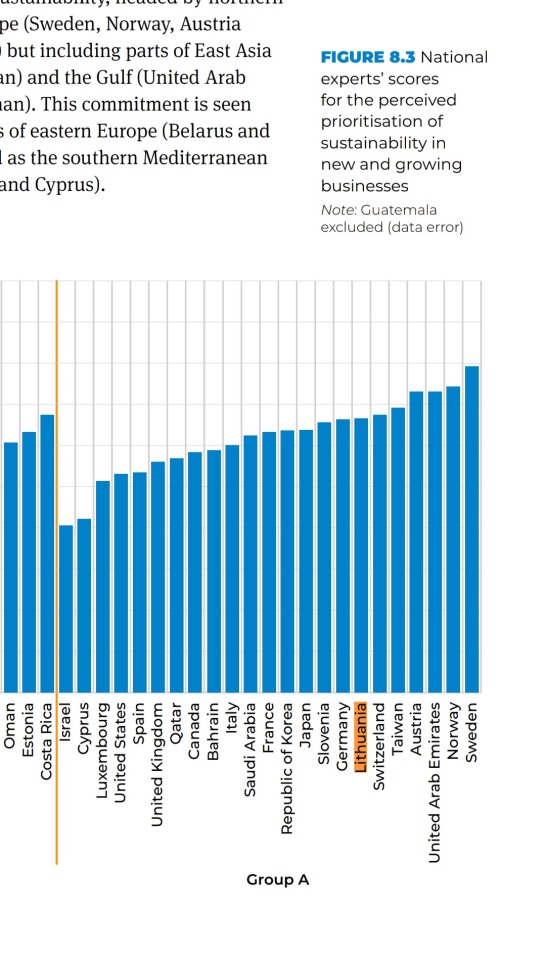
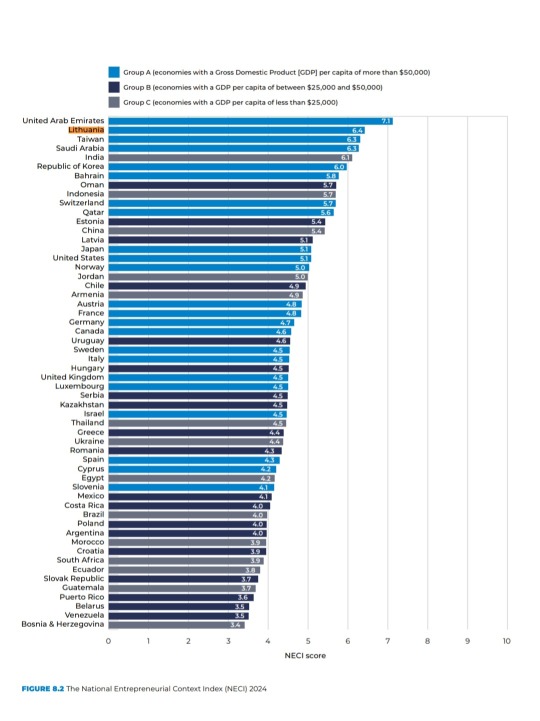
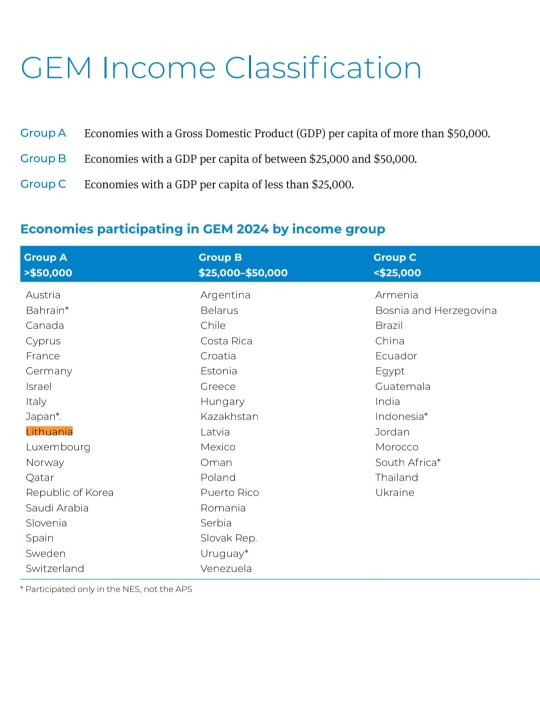
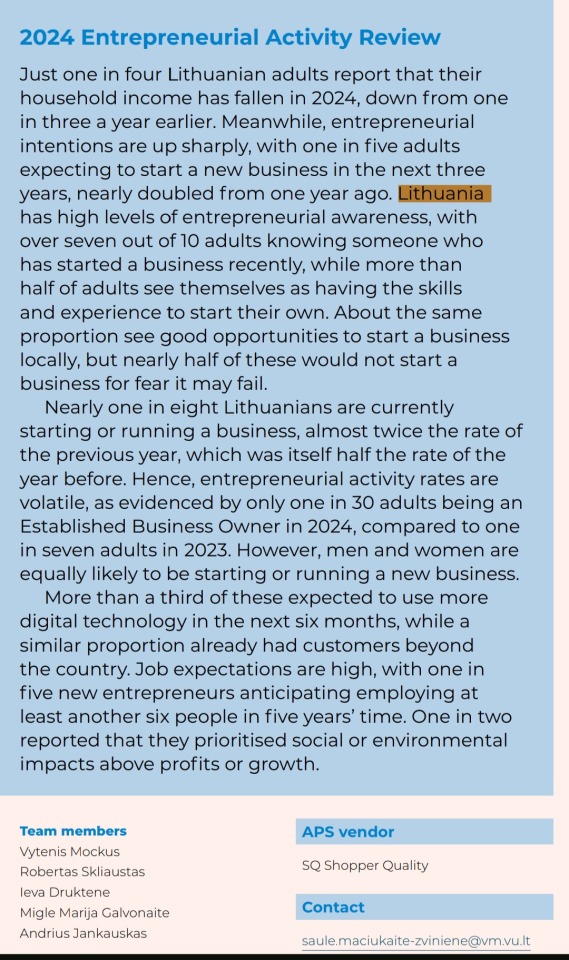
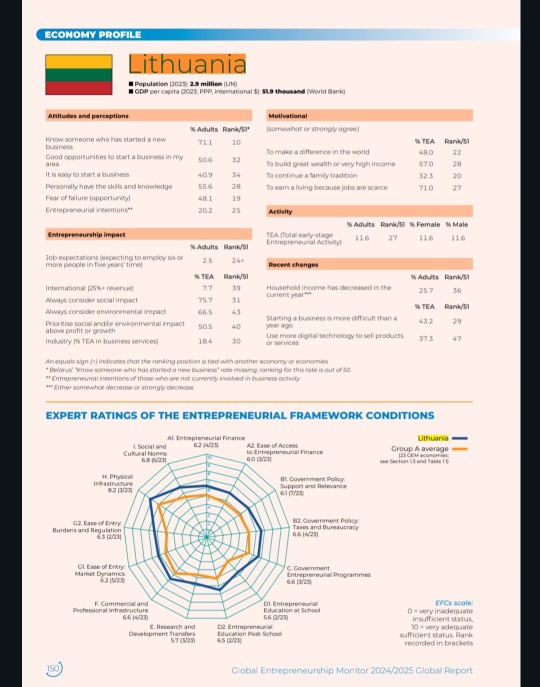
More info here.
#GUUUUYYYSSSSS#I'm living in the 2nd best economy in the world💅💅💅#Lithuania#economics#business#enterprenuership#statistics
2 notes
·
View notes
Text
Top 5 data management mistakes costing UAE businesses millions
Introduction
In an increasingly digital economy, poor data practices have become more than just an IT issue—they are an enterprise-level risk.

Across the UAE, businesses are losing millions annually due to fragmented systems, inconsistent governance, and reactive strategies.
In this article, we’ll unpack five critical data managementmistakes, their tangible costs, and what forward-thinking firms are doing to stay compliant, competitive, and data-resilient in 2025.
1. Fragmented Data Silos Across Departments
While decentralization may speed up local decision-making, it often comes at the cost of data cohesion. Sales, marketing, finance, and operations frequently maintain isolated datasets that never sync—each with its own metrics, definitions, and reporting cycles. The cost? Missed opportunities, duplicated efforts, inconsistent KPIs, and customer insights that are either delayed or distorted due to incompatible sources. Fix: Implement centralized data lakes or unified ERP/CRM systems to bridge these silos. Introduce cross-departmental governance protocols, and enforce scheduled data synchronization to maintain consistency across all business functions.
2. Weak Data Governance and Access Controls
Many UAE businesses still lack formal governance policies. There’s little clarity on who owns the data, who can access it, and how data quality is maintained across systems and touchpoints. The cost? Increased risk of data breaches, GDPR/DIFC non-compliance, unauthorized exposure of sensitive information, and eroded stakeholder trust—especially in sectors like healthcare, finance, and public services. Fix: Deploy a robust data governance framework with clearly defined roles, role-based access controls, automated audit trails, and regular compliance reviews. Embed accountability at every stage of data creation and usage.
3. Overreliance on Legacy Infrastructure
Outdated database architectures, manual Excel trackers, and siloed on-prem systems continue to dominate back-end processes—despite widespread digital front-ends. The cost? Performance bottlenecks during scale, limited real-time data visibility, high IT maintenance overheads, and an inability to integrate with modern analytics or automation tools. Fix: Migrate to cloud-native platforms that support elastic scaling, system redundancy, and embedded analytics. Incorporate APIs for seamless integration with existing digital tools while phasing out legacy dependencies.
4. Lack of Data Quality Assurance
Inconsistent formats, missing fields, outdated records, and duplicated entries remain common issues across enterprise datasets—especially when multiple input sources aren’t standardized.
The cost?
Flawed business reports, poor AI/ML model performance, customer experience setbacks, and incorrect decision-making based on unreliable data.
Fix:
Introduce end-to-end data quality frameworks that include automated validation checks, enrichment protocols, and AI-driven anomaly detection.
Regular audits and cleansing routines should be part of standard operations.
5. Treating Data Strategy as a One-Off Project
Many businesses initiate data initiatives as one-time efforts—an implementation followed by months (or years) of stagnation.
Without ongoing refinement, systems become outdated, and processes lose alignment with evolving business needs.
The cost?
Strategic misalignment, increasing technical debt, and declining ROI on digital investments that fail to evolve with the organization’s goals.
Fix:
Create a living data strategy—an adaptive roadmap reviewed quarterly, driven by key stakeholders across departments.
Tie progress to measurable KPIs like operational efficiency, customer satisfaction, or revenue growth from data-led initiatives.
Turn Costly Data Chaos into Smart Business Decisions: Nordstar Vision
At Nordstar Vision, we help businesses move from fragmented systems to future-ready data ecosystems.
Whether you’re struggling with outdated infrastructure, data silos, or lack of governance, our team brings tailored solutions to help you scale confidently in a data-first economy.
Let’s turn your data into a growth engine.
Reach out to us today at +(971) 50 1108756 or visit nordstartvision.
#data management UAE#business data mistakes#UAE data strategy#data governance UAE#database management Dubai#digital transformation UAE#legacy system issues#cloud migration UAE#data silos#enterprise data solutions#data compliance UAE#Nordstar Vision#data quality assurance#CRM data issues#ERP data integration#UAE business IT risks#data-driven decisions#business analytics UAE#smart data practices
1 note
·
View note
Text
Top 10 In- Demand Tech Jobs in 2025

Technology is growing faster than ever, and so is the need for skilled professionals in the field. From artificial intelligence to cloud computing, businesses are looking for experts who can keep up with the latest advancements. These tech jobs not only pay well but also offer great career growth and exciting challenges.
In this blog, we’ll look at the top 10 tech jobs that are in high demand today. Whether you’re starting your career or thinking of learning new skills, these jobs can help you plan a bright future in the tech world.
1. AI and Machine Learning Specialists
Artificial Intelligence (AI) and Machine Learning are changing the game by helping machines learn and improve on their own without needing step-by-step instructions. They’re being used in many areas, like chatbots, spotting fraud, and predicting trends.
Key Skills: Python, TensorFlow, PyTorch, data analysis, deep learning, and natural language processing (NLP).
Industries Hiring: Healthcare, finance, retail, and manufacturing.
Career Tip: Keep up with AI and machine learning by working on projects and getting an AI certification. Joining AI hackathons helps you learn and meet others in the field.
2. Data Scientists
Data scientists work with large sets of data to find patterns, trends, and useful insights that help businesses make smart decisions. They play a key role in everything from personalized marketing to predicting health outcomes.
Key Skills: Data visualization, statistical analysis, R, Python, SQL, and data mining.
Industries Hiring: E-commerce, telecommunications, and pharmaceuticals.
Career Tip: Work with real-world data and build a strong portfolio to showcase your skills. Earning certifications in data science tools can help you stand out.
3. Cloud Computing Engineers: These professionals create and manage cloud systems that allow businesses to store data and run apps without needing physical servers, making operations more efficient.
Key Skills: AWS, Azure, Google Cloud Platform (GCP), DevOps, and containerization (Docker, Kubernetes).
Industries Hiring: IT services, startups, and enterprises undergoing digital transformation.
Career Tip: Get certified in cloud platforms like AWS (e.g., AWS Certified Solutions Architect).
4. Cybersecurity Experts
Cybersecurity professionals protect companies from data breaches, malware, and other online threats. As remote work grows, keeping digital information safe is more crucial than ever.
Key Skills: Ethical hacking, penetration testing, risk management, and cybersecurity tools.
Industries Hiring: Banking, IT, and government agencies.
Career Tip: Stay updated on new cybersecurity threats and trends. Certifications like CEH (Certified Ethical Hacker) or CISSP (Certified Information Systems Security Professional) can help you advance in your career.
5. Full-Stack Developers
Full-stack developers are skilled programmers who can work on both the front-end (what users see) and the back-end (server and database) of web applications.
Key Skills: JavaScript, React, Node.js, HTML/CSS, and APIs.
Industries Hiring: Tech startups, e-commerce, and digital media.
Career Tip: Create a strong GitHub profile with projects that highlight your full-stack skills. Learn popular frameworks like React Native to expand into mobile app development.
6. DevOps Engineers
DevOps engineers help make software faster and more reliable by connecting development and operations teams. They streamline the process for quicker deployments.
Key Skills: CI/CD pipelines, automation tools, scripting, and system administration.
Industries Hiring: SaaS companies, cloud service providers, and enterprise IT.
Career Tip: Earn key tools like Jenkins, Ansible, and Kubernetes, and develop scripting skills in languages like Bash or Python. Earning a DevOps certification is a plus and can enhance your expertise in the field.
7. Blockchain Developers
They build secure, transparent, and unchangeable systems. Blockchain is not just for cryptocurrencies; it’s also used in tracking supply chains, managing healthcare records, and even in voting systems.
Key Skills: Solidity, Ethereum, smart contracts, cryptography, and DApp development.
Industries Hiring: Fintech, logistics, and healthcare.
Career Tip: Create and share your own blockchain projects to show your skills. Joining blockchain communities can help you learn more and connect with others in the field.
8. Robotics Engineers
Robotics engineers design, build, and program robots to do tasks faster or safer than humans. Their work is especially important in industries like manufacturing and healthcare.
Key Skills: Programming (C++, Python), robotics process automation (RPA), and mechanical engineering.
Industries Hiring: Automotive, healthcare, and logistics.
Career Tip: Stay updated on new trends like self-driving cars and AI in robotics.
9. Internet of Things (IoT) Specialists
IoT specialists work on systems that connect devices to the internet, allowing them to communicate and be controlled easily. This is crucial for creating smart cities, homes, and industries.
Key Skills: Embedded systems, wireless communication protocols, data analytics, and IoT platforms.
Industries Hiring: Consumer electronics, automotive, and smart city projects.
Career Tip: Create IoT prototypes and learn to use platforms like AWS IoT or Microsoft Azure IoT. Stay updated on 5G technology and edge computing trends.
10. Product Managers
Product managers oversee the development of products, from idea to launch, making sure they are both technically possible and meet market demands. They connect technical teams with business stakeholders.
Key Skills: Agile methodologies, market research, UX design, and project management.
Industries Hiring: Software development, e-commerce, and SaaS companies.
Career Tip: Work on improving your communication and leadership skills. Getting certifications like PMP (Project Management Professional) or CSPO (Certified Scrum Product Owner) can help you advance.
Importance of Upskilling in the Tech Industry
Stay Up-to-Date: Technology changes fast, and learning new skills helps you keep up with the latest trends and tools.
Grow in Your Career: By learning new skills, you open doors to better job opportunities and promotions.
Earn a Higher Salary: The more skills you have, the more valuable you are to employers, which can lead to higher-paying jobs.
Feel More Confident: Learning new things makes you feel more prepared and ready to take on tougher tasks.
Adapt to Changes: Technology keeps evolving, and upskilling helps you stay flexible and ready for any new changes in the industry.
Top Companies Hiring for These Roles
Global Tech Giants: Google, Microsoft, Amazon, and IBM.
Startups: Fintech, health tech, and AI-based startups are often at the forefront of innovation.
Consulting Firms: Companies like Accenture, Deloitte, and PwC increasingly seek tech talent.
In conclusion, the tech world is constantly changing, and staying updated is key to having a successful career. In 2025, jobs in fields like AI, cybersecurity, data science, and software development will be in high demand. By learning the right skills and keeping up with new trends, you can prepare yourself for these exciting roles. Whether you're just starting or looking to improve your skills, the tech industry offers many opportunities for growth and success.
#Top 10 Tech Jobs in 2025#In- Demand Tech Jobs#High paying Tech Jobs#artificial intelligence#datascience#cybersecurity
2 notes
·
View notes
Text
Phoenix App Development: Trends, Challenges, and the Future of Local Tech

The Arizona sun isn't just hot – it's also a breeding ground for innovation. Phoenix, Arizona, has emerged as a major hub for mobile app development, attracting businesses and entrepreneurs seeking to tap into a vibrant tech ecosystem. At Net-Craft.com, a leading Phoenix app development company located in Scottsdale, we've witnessed this growth firsthand.
This article dives into the exciting world of Phoenix app development, exploring the latest trends, the challenges developers face, and a glimpse into the future of local tech.
Phoenix App Development Trends: Soaring High
Phoenix's mobile app development scene is experiencing a surge, fueled by several key trends:
Focus on User Experience (UX): Modern users demand intuitive, user-friendly apps. Phoenix app developers are prioritizing clean interfaces, seamless navigation, and personalized experiences to keep users engaged.
Emerging Technologies: Cutting-edge technologies like Artificial Intelligence (AI), Augmented Reality (AR), and Virtual Reality (VR) are making their mark. Phoenix software development companies are incorporating these elements to create innovative and interactive apps.
The Rise of On-Demand Services: From food delivery to transportation, on-demand services are booming. Phoenix app developers are crafting solutions that cater to this growing need, offering convenience and flexibility to users.
Cross-Platform Development: Reaching a wider audience is crucial. Phoenix mobile app developers are increasingly adopting cross-platform frameworks like React Native or Flutter to create apps that function seamlessly across iOS and Android devices.
Security at the Forefront: Data security is paramount. Phoenix app developers are prioritizing robust security measures to protect user information and ensure app safety.
These trends highlight the dynamic nature of Phoenix app development. By staying ahead of the curve and embracing these advancements, developers can create apps that stand out in a crowded marketplace.
Challenges for Phoenix App Developers: Navigating the Landscape
While promising, the Phoenix app development landscape presents its own set of challenges:
Talent Acquisition: Highly skilled developers, designers, and user experience specialists are in high demand. Phoenix app development companies need to implement competitive hiring strategies to attract and retain top talent.
Project Management: Keeping complex projects on track and within budget requires meticulous planning and execution. Phoenix software development companies need to utilize efficient project management methodologies like Agile to ensure smooth development processes.
App Store Optimization (ASO): Standing out in app stores is a constant battle. Phoenix app developers need to employ effective ASO strategies like keyword optimization and compelling app descriptions to increase discoverability.
Maintaining App Engagement: User retention is critical. To keep users coming back, Phoenix mobile app developers need to implement strategies like push notifications, in-app rewards, and continuous improvement based on user feedback.
Overcoming these challenges requires a commitment to continuous learning, collaboration, and a customer-centric approach. Phoenix app development companies must adapt their strategies to stay competitive and deliver successful mobile app solutions.
The Future of Local Tech: Phoenix Takes Flight
The outlook for Phoenix's tech future is bright. Several factors contribute to this promising forecast:
Growing Startup Ecosystem: Arizona boasts a thriving startup scene. Phoenix, as a major hub, attracts angel investors and venture capital, providing funding opportunities for innovative app ideas.
Educational Institutions: Universities like Arizona State University and the University of Arizona are producing a highly skilled technical workforce, fueling the Phoenix app development scene.
Government Support: Government initiatives and tax breaks are fostering a supportive environment for tech companies to flourish.
Focus on Diversity: Phoenix is actively promoting diversity within the tech industry. This inclusivity fosters innovation and attracts talent from diverse backgrounds.
These factors position Phoenix as a key player in the national tech landscape. With continued growth and collaboration, Phoenix app development has the potential to take flight and reach even greater heights.
Why Choose Phoenix App Development?
With its innovative spirit, skilled talent pool, and a supportive tech ecosystem, Phoenix offers a compelling proposition for businesses looking to develop mobile apps. Here's why choosing a Phoenix app development company like Net-Craft.com can benefit you:
Local Expertise: We understand the specific needs and trends of the Phoenix market, ensuring your app caters to the local audience.
Agile Development: We follow a flexible approach, allowing you to adapt your app based on user feedback and market demands.
Focus on User Experience: We prioritize user experience, creating apps that are intuitive, engaging, and effective.
Cost-Effectiveness: We offer competitive rates without compromising on quality, making app development accessible to businesses of all sizes.
By partnering with a local Phoenix app development company, you can leverage the expertise and resources available within this vibrant tech hub.
Embrace the Phoenix Advantage
The Phoenix app development scene is soaring. By leveraging the expertise of local developers, embracing emerging technologies, and prioritizing user experience, you can create mobile apps that drive business growth and leave a lasting impact.
Net-Craft.com: Your Partner in Phoenix App Development
At Net-Craft.com, we're passionate about turning your app ideas into reality. Our team of experienced developers is committed to delivering cutting-edge solutions that meet the highest standards of quality and innovation.
Contact us today to discuss your app development project and let's build something amazing together!
Know more https://www.net-craft.com/blog/2024/12/08/phoenix-app-development-trends-challenges-future/
#phoenix app development#mobile app development phoenix#phoenix app developers#phoenix software development#phoenix mobile app development
2 notes
·
View notes
Text
The Trump administration has scrapped its predecessor’s sweeping export controls for advanced artificial intelligence chips, known as the AI diffusion rule.
“To win the AI race, the Biden AI diffusion rule must go,” posted David Sacks, U.S. President Donald Trump’s top AI advisor, on May 8. Sacks continued his criticism at the Saudi-U.S. Investment Forum a few days later, arguing that the rule “restricted the diffusion or proliferation of American technology all over the world.”
As the administration decides what comes next, it should raise its sights from merely proposing a “simpler” rule to manage the diffusion of AI chips. Instead, it should seize the opportunity to offer an ambitious vision to promote the broader diffusion of U.S. technology.
After all, the world not only wants the United States’ AI chips, but also its AI applications, data centers, cloud services, satellites, and advanced technology offerings generally. But even as Beijing extends its digital offerings in key emerging markets, U.S. foreign policy has failed to adapt for a global technology competition with era-defining stakes. Whether you agree with the Trump administration or not, its disruption is an opportunity to forge a new model of technology statecraft to help the United States win the race to shape strategic digital infrastructure and technology diffusion across the globe.
To start, Washington must finally learn from its failure in the transition to 4G and 5G telecommunications networks, where Beijing’s state-backed model—and the absence of a compelling U.S.-led alternative—enabled Huawei and ZTE to all but corner emerging markets. Huawei now operates in more than 170 countries worldwide and is the top global provider of telecommunications equipment. But if there is broad consensus among U.S. policymakers that Beijing won that global technology transition, there is little agreement about how to win the next.
They have little time to waste. From Brasília to New Delhi, technology has moved to the center of government ambitions to drive growth, improve governance, and modernize security. Indonesian President Prabowo Subianto views the digital sector as essential to diversifying the country’s commodity-reliant economy. Kenyan President William Ruto hopes to boost the country’s “Silicon Savannah” by accelerating cloud migration. Saudi Crown Prince Mohammed bin Salman has made AI central to his “Vision 2030” framework for the kingdom’s modernization. The result is surging global demand not only for AI data centers, but also for cutting-edge digital infrastructure, services, and skilling more broadly.
In the coming years, foreign capitals and corporate boards will make potentially generational decisions about whether to meet this demand by partnering with the United States and its allies or China. These short-term decisions could have generational consequences. Projects to lay a transcontinental submarine cable or build large-scale data centers, for instance, are mapped in decades.
Even virtual cloud and AI services can have long-term stickiness. Imagine the pain of migrating an entire ministry’s data to a new cloud provider, or switching from an AI model that has been fine-tuned with a company’s sensitive data over time. Consider Beijing’s decade-plus struggle to transition its government computers from Windows. First movers reap powerful advantages.
If the stakes are great in the current round of global technology diffusion, so is the United States’ hand. Unlike the transition to 4G and 5G networks, where Western competitors such as Ericsson and Nokia struggled to match Huawei’s and ZTE’s subsidized offerings in emerging markets, the United States enters this technology transition with formidable advantages.
The United States occupies a commanding position in AI, with leadership or leverage over every part of the stack, ranging from chip design, tooling, and fabrication to model training and testing. U.S. companies hold at least a 70 percent share of the global cloud market. In space, Starlink has launched more satellites than all its competitors combined since 2020. Below the waves, three of the top four companies deploying subsea fiberoptic cables—the internet’s backbone—are from the United States or its close allies: SubCom (U.S.), Alcatel (France), and NEC (Japan). China controls the fourth, HMN Technologies (formerly Huawei Marine), which has deployed a mere 7 percent of the world’s submarine cables.
Despite powerful advantages, U.S. success is far from assured. The lesson of the 4G and 5G race is not to mirror China’s state-driven approach or to leave the private sector to fend for itself against Chinese competitors with powerful state backing. Nor is it to rely solely on export controls and other restrictive measures, however necessary those may be. The answer is to make U.S. foreign policy fit the global technology competition.
Washington can start with reforms in three broad areas.
First, unleash the United States’ strategic investment tools. One of Washington’s most promising but underused tools is the International Development Finance Corporation (DFC). Created during the first Trump administration, the DFC makes market-driven investments to advance both humanitarian and national security goals, and it has several tools to attract private capital from equity investments to political risk insurance.
As Congress considers DFC reauthorization—its current mandate expires in September—it should raise the existing cap on its lending authority from $60 billion to at least $100 billion and make strategic technologies and digital infrastructure an explicit priority. Congress should also loosen restrictions that can block DFC from supporting digital infrastructure projects that incidentally benefit high-income countries, which has kept it from financing critical subsea cables in the Indo-Pacific that invariably have landing points in Singapore, a major interconnection hub for the region.
The Export-Import Bank (EXIM) also punches below its weight. EXIM helps level the playing firm for U.S. firms competing abroad with a $135 billion lending limit and tools such as direct loans, loan guarantees, and insurance to de-risk purchases of U.S. exports. The United States once led the world in export financing, but China now dominates. In 2022, Chinese export credit agencies provided $11 billion in export support, compared to just $2.7 billion from EXIM.
Under the first Trump administration, EXIM created a new China and Transformational Exports Program (CTEP) to prioritize investments that counter Beijing’s subsidies and support advanced technologies such as AI and semiconductors. EXIM now aims to reserve at least 20 percent of its support for the program.
Despite progress, EXIM remains plagued with issues. To receive CTEP support, at least 51 percent of the exported content must be American-made—far higher than requirements in competitor agencies. Another requirement that EXIM-supported goods travel on U.S.-flagged vessels also hinders participation. Although well-intentioned, EXIM’s mandate to create jobs can deprioritize the export of low-labor digital exports such as AI and cloud services. Compounding the problem, EXIM is also required to limit defaults across its total lending portfolio to less than 2 percent, fueling risk-aversion.
Washington should reform EXIM for the global technology competition by at least doubling the 20 percent allocation for CTEP, relaxing shipping rules, and counting some allied components toward its content requirement. Lawmakers could also loosen the mandate to support U.S. job creation for digital services and double EXIM’s default cap to encourage more risk-taking.
Second, Washington should turbocharge its commercial diplomacy for technology. Between 2016 and 2020, an average of just 900 U.S. personnel from the State and Commerce departments were deployed abroad for commercial diplomacy, and just a fraction focused on technology. Since 2022, the State Department has taken important steps by establishing a new Bureau of Cyberspace and Digital Policy, a special envoy for critical and emerging technologies, and a course on cyberspace and digital policy tradecraft.
Despite this progress, few U.S. diplomats—and even fewer ambassadors—have deep technology expertise, which means that front-line opportunities to secure key technology bids and shape emerging AI or data policies can go unnoticed or suffer from inadequate staff or substance to engage effectively.
As the administration reforms the State Department, it should reinforce the Bureau of Cyberspace and Digital Policy, which has elevated and streamlined technology diplomacy across the government; expand technology training for foreign service officers; and, more ambitiously, launch a dedicated career track within the diplomatic corps for foreign technology officers.
Two smaller and often overlooked arms of the country’s technology diplomacy are the U.S. Foreign Commercial Service and the U.S. Trade and Development Agency (USTDA). The Commercial Service is a roughly 2,200-person global network of trade specialists that helps U.S. businesses identify and navigate foreign markets. But just 225 of its staff deploy abroad across 80 countries, which means that they constantly struggle to meet demand from U.S. technology companies and foreign partners. The USTDA helps identify and mature commercial opportunities abroad to boost U.S. exports. Digital infrastructure is one of the agency’s four priority sectors, but surging interest has far outpaced current resources.
The Trump administration can turbocharge U.S. commercial diplomacy by consolidating USTDA and the Commercial Service, elevating technology and digital infrastructure as a priority, and allocating more resources and personnel.
Finally, the United States should embrace a newly ambitious vision for technology partnerships. Too often, U.S. and allied firms lose one-off bids to subsidized, politically backed Chinese competitors, even if the firms might prefer to align with the high-tech U.S. ecosystem. Washington should explore how to make such an offer without simply imitating Beijing’s state-led model.
For example, Washington could create opportunities for foreign governments to request strategic technology partnerships that match their specific needs—for example, to accelerate AI adoption in government, expand data center capacity, or improve rural connectivity with low earth orbit satellites.
Washington could lay out clear, broadly consistent criteria as a condition for these partnerships—such as robust IP and cybersecurity protections, divestment from China-linked digital infrastructure, purchase commitments for U.S. goods and services, and even investment in the United States. The Trump administration has begun to model such an approach in its recent deals with Saudi Arabia and the United Arab Emirates, but it could go even further.
If countries meet these conditions, Washington should commit not only to loosening export controls on advanced AI chips, but also to fast-tracking support from the DFC, EXIM, and USTDA; expanding technology trade missions, talent exchange programs, and research collaboration; and facilitating connections with U.S. technology firms. The United States holds the strongest hand in advanced technology and should drive a hard bargain, but it should also be generous when countries agree.
Washington can also do more to align with technology-leading allies on joint investments in strategic emerging markets. For example, Washington could better coordinate with Japan’s Overseas Development Assistance program to boost Open RAN networks across the Indo-Pacific, tap the European Union’s Global Gateway to connect subsea cables to Africa, and support India’s Digital Public Infrastructure to counter China’s “smart city” offerings.
Middle Eastern sovereign wealth funds may raise tricky strategic questions as longer-term partners, but there are other, less controversial players that Washington has yet to fully explore—such as Norway, which has both attractive conditions for AI data centers and the world’s largest sovereign wealth fund. Washington and its allies may struggle to match Beijing’s subsidies on their own, but they can easily do so together.
As the world rushes into an accelerating competition to deploy strategic technologies and digital infrastructure across the globe, the United States has almost everything it needs to prevail—world-leading companies and products, an unrivaled network of technology-leading allies, and an administration eager for reform. What Washington lacks, however, is a vision to harness these strengths in a new model of technology statecraft to help the United States win.
3 notes
·
View notes
Text
Top investors in space in India
Why Venture Capitalists Are Betting Big on India’s Space Sector

A Thriving Ecosystem of Space Startups: India’s space ecosystem is no longer limited to government-run entities like the Indian Space Research Organisation (ISRO). Today, a surge of innovative space startups are taking the stage, offering cutting-edge solutions in satellite technology, launch services, space data analytics, and more. Companies like Skyroot Aerospace, Agnikul Cosmos, and Pixxel lead the charge, each carving out a unique niche. These startups are pushing the boundaries of what’s possible, driving investor interest with the potential for high returns in a relatively untapped market.
Strong Government Support and Policy Reforms: One of the key reasons behind the surge in space venture capital in India is the proactive stance taken by the Indian government. Recent policy reforms have opened the doors for private players to participate in space activities, previously dominated by ISRO. Establishing IN-SPACe (Indian National Space Promotion and Authorization Center) is a significant step, providing a regulatory framework that encourages private sector involvement. Such government support has given investors in space in India the confidence to back ambitious projects, knowing there’s a clear path for private ventures.
Cost-Effective Innovation as a Competitive Edge: India’s reputation for cost-effective innovation is another major attraction for investors. Launching satellites at a fraction of the cost compared to global competitors has positioned India as a hub for affordable space technology. This competitive edge not only allows Indian space startups to thrive domestically but also makes them attractive on the international stage. Investors are keen to support companies that can deliver world-class technology with lower capital outlays, reducing investment risks while promising impressive returns.
Global Interest in Indian Talent and Expertise: India’s space sector is not just about affordability; it’s about world-class talent. The country boasts a deep pool of highly skilled engineers, scientists, and entrepreneurs with expertise in aerospace and technology. This talent pool has been instrumental in driving innovation and attracting global attention. International investors are increasingly looking to partner with Indian space startups, recognizing the country’s unique blend of technical prowess and entrepreneurial spirit.
A Growing Market for Space-Based Services: The market for space-based services, including satellite communications, Earth observation, and data analytics, is expanding rapidly. In India, this growth is driven by rising demand from industries such as agriculture, telecommunications, logistics, and defense. With space technology playing a crucial role in optimizing these sectors, investors see an opportunity to capitalize on the potential for domestic and international applications. Space-based services represent a lucrative market, attracting space venture capital in India to back startups that can cater to these needs.
Strategic Partnerships and Collaborations: Indian space startups are not working in isolation; they are forming strategic partnerships with global companies and space agencies. Collaborations with NASA, ESA (European Space Agency), and private companies have opened up new opportunities for technology sharing, funding, and market access. These partnerships have also strengthened investor confidence, as they reduce risks and validate the technology being developed by Indian companies. For investors in space in India, such collaborations signal a promising future, driving more venture capital into the sector.
A New Era of Commercial Space Exploration: The idea of commercial space exploration, once confined to science fiction, is now becoming a reality. From reusable rockets to satellite constellations, Indian space startups are exploring new frontiers that were once considered out of reach. This new era of commercial space exploration has piqued the interest of venture capitalists who see the potential for profitable exits through IPOs, acquisitions, and global partnerships. With private space missions no longer just a dream, space venture capital in India is ready to fuel the next big leap.
Encouraging Signs from Successful Fundraising Rounds: The confidence in India’s space sector is evident from the successful fundraising rounds by leading space startups. Companies like Skyroot Aerospace and Agnikul Cosmos have secured millions in funding from top-tier venture capital firms. These funding rounds not only provide the necessary resources for scaling but also act as a signal to other investors that the Indian space market is mature and ready for high-stakes investment. The momentum created by these early successes is a clear indicator of why investors in space in India are increasingly willing to place their bets.
Conclusion: A Promising Orbit for Investment India’s space sector is on an exciting trajectory. With a favorable policy environment, a surge of innovative startups, and a proven track record of cost-effective solutions, it’s no wonder that space venture capital in India is booming. As the country continues to explore new frontiers and expand its role in global space exploration, venture capitalists are set to play a pivotal role in shaping the future. For those looking to invest in the final frontier, India’s space industry presents a unique opportunity to be part of a revolution that’s only just beginning.
#305, 3rd Floor, 5 Vittal Mallya Road, Bengaluru, Karnataka, 560001, India
5 Ring Road, Lajpat Nagar 4, 3rd Floor, New Delhi-110024
#Keywords#best venture capital firm in india#venture capital firms in india#popular venture capital firms#venture capital firm#seed investors in bangalore#deep tech investors india#startup seed funding india#funding for startups in india#early stage venture capital firms#invest in startups bangalore#funders in bangalore#startup investment fund#fintech funding#india alternatives investment advisors#best venture capital firms in india#business investors in kerala#venture capital company#semiconductor startups#semiconductor venture capital#investors in semiconductors#startup seed funding in India#deep tech venture capital#deeptech startups in india#semiconductor companies in india#saas angel investors#saas venture capital firms#saas venture capital#b2b venture capital#space venture capital in india
2 notes
·
View notes
Text
Top Trends Reshaping the GCC Data Centre Landscape This Year

Unraveling the Exponential Rise of the GCC Data Center Market Ecosystem
The Gulf Cooperation Council data center market stands at the forefront of regional digital transformation, propelled by surging demand for resilient IT infrastructure, AI integration, and edge computing capabilities. As we project forward, the GCC data center market-valued at USD 5.87 billion in 2024—is set to experience a seismic expansion, reaching an anticipated USD 33.05 billion by 2031, growing at a CAGR of 12.3%. This trajectory is underpinned by high-performance computing demands, smart city initiatives, sovereign digital strategies, and the accelerated adoption of hybrid cloud frameworks.
Request Sample Report PDF (including TOC, Graphs & Tables): https://www.statsandresearch.com/request-sample/40593-data-center-industry-analysis
Technological Drivers Reshaping GCC’s Digital Backbone
Edge Computing and AI: Catalysts of Infrastructure Evolution
The fusion of edge computing and artificial intelligence is redefining the physical and operational contours of data center infrastructure. These technologies enable real-time data processing, lower latency, and enhanced bandwidth efficiency—essentials in a region increasingly reliant on IoT, autonomous systems, and immersive media.
Edge Data Centers are proliferating across urban and remote industrial zones to reduce network latency and support mission-critical applications in telecom, logistics, and smart utilities.
AI-powered infrastructure management enables predictive maintenance, workload optimization, and autonomous scalability, aligning with sustainability goals and uptime assurance.
Cloud-Native Transformation and Multi-Cloud Adoption
Enterprise and government adoption of hybrid and multi-cloud ecosystems is fueling demand for flexible, modular, and scalable data centers. Organizations are rapidly transitioning from legacy systems to cloud-native architectures that support containerization, orchestration (e.g., Kubernetes), and zero-trust security postures.
Get up to 30%-40% Discount: https://www.statsandresearch.com/check-discount/40593-data-center-industry-analysis
Key GCC Data Center Market Segments and Growth Benchmarks:
Data Center Types: Segment-Wise Expansion
Enterprise Data Centers dominate current deployment, with projections reaching USD 12.69 billion by 2031. These are favored by banks, government entities, and large corporations for security, compliance, and customization.
Edge Data Centers, expected to grow at a CAGR of 13.3%, are essential for latency-sensitive operations—especially in retail, telecom, and autonomous industries.
By Component: IT Infrastructure Leads the Stack
IT Infrastructure, valued at USD 7.27 billion in 2024, comprises compute, storage, and networking units. The sector will nearly double by 2031, reaching over USD 16 billion.
Management Software emerges as the fastest-growing component (13.9% CAGR), driven by demand for automated orchestration, resource analytics, and energy optimization.
Tier Standards: Reliability as a Strategic Differentiator
Tier III Data Centers remain the enterprise standard for redundancy and availability, offering a balance between cost-efficiency and resilience.
Tier IV Data Centers are witnessing increased adoption in financial and defense sectors due to their fault-tolerant architectures and unmatched uptime assurance.
Enterprise Demand: SME Acceleration and Enterprise Stability
Large Enterprises will remain dominant consumers, owing to vast operational scale and stringent compliance requirements.
SMEs, however, will outpace in growth (12.8% CAGR), increasingly leveraging colocation and cloud-managed data services to fuel innovation and agility.
Industry Verticals: IT and Telecom Anchor Growth
IT & Telecom, accounting for USD 3.83 billion in 2024, drive GCC data center market dominance through robust connectivity and digital service demand.
Retail, with the highest CAGR of 13.3%, is expanding rapidly due to rising e-commerce penetration and digital payment infrastructure.
Geographic Landscape: Market Expansion Across the GCC
United Arab Emirates: The Regional Nucleus of Digital Infrastructure
With a GCC data center market value of USD 4.91 billion in 2024, the UAE leads in regional data center development. Its progressive regulatory landscape, free zones (like Dubai Internet City), and focus on AI strategy and cloud governance position it as the premier data hub.
Saudi Arabia: Hyper-Scaling Through Vision 2030
Saudi Arabia's Vision 2030 initiatives are accelerating digital infrastructure deployment. Projected to grow at a CAGR of 12.7%, the Kingdom is investing in hyperscale facilities and AI-integrated networks to empower its Smart Nation ambitions and government digital services.
GCC Data Center Market Forces and Challenges
GCC Data Center Market Growth Drivers
Proliferation of smart city initiatives, such as NEOM and Masdar.
National cloud-first policies and rising government investments.
Accelerated digital adoption across BFSI, healthcare, and manufacturing.
Constraints and Strategic Hurdles
Acute skills shortage in high-density data center operations.
Escalating OPEX due to cooling and power requirements in desert climates.
Regulatory complexities and varying data sovereignty frameworks across GCC nations.
Key Players and Strategic Developments
Major incumbents and rising challengers are reshaping the competitive landscape through aggressive capital expenditures, greenfield projects, and regional collaborations.
Major Developments
Batelco’s White Space Data Center in Bahrain, developed with Almoayyed Contracting Group, introduces a high-density, energy-efficient facility adjacent to a solar farm—marking a regional milestone in sustainable infrastructure.
Ooredoo’s USD 1 billion investment, backed by QAR 2 billion in financing, aims to scale their data center capacity beyond 120MW, with AI and cloud infrastructure at the core.
GCC Data Center Market Leaders
Equinix – Expanding interconnection hubs and hybrid cloud onramps.
Khazna Data Centers – Driving hyperscale growth with government-backed investment.
STC Solutions and Mobily – Enhancing regional content delivery and 5G edge integration.
Microsoft Azure – Strengthening sovereign cloud services and AI deployment.
Strategic Outlook and Market Forecast
The GCC data center market is rapidly transitioning from traditional IT support roles to becoming central to digital economic competitiveness. As sovereign data strategies, AI integration, and decentralized architectures take hold, the region’s data center industry is set to become one of the fastest-growing globally.
By 2031, Tier IV and Edge Data Centers will define market leadership.
Public-private partnerships, sovereign fund allocations, and energy innovations will drive infrastructure resilience and global competitiveness.
Green data centers, leveraging renewable energy and liquid cooling technologies, will gain prominence amid growing environmental mandates.
Purchase Exclusive Report: https://www.statsandresearch.com/enquire-before/40593-data-center-industry-analysis
Final Word
We are entering a transformative era in the GCC’s digital infrastructure ecosystem. The convergence of policy, technology, and private capital is accelerating the rise of a hyperconnected, data-driven Gulf economy. Those who invest now in future-ready, AI-integrated, edge-enabled data center architecture will lead the next chapter of the region’s digital revolution.
Our Services:
On-Demand Reports: https://www.statsandresearch.com/on-demand-reports
Subscription Plans: https://www.statsandresearch.com/subscription-plans
Consulting Services: https://www.statsandresearch.com/consulting-services
ESG Solutions: https://www.statsandresearch.com/esg-solutions
Contact Us:
Stats and Research
Email: [email protected]
Phone: +91 8530698844
Website: https://www.statsandresearch.com
1 note
·
View note